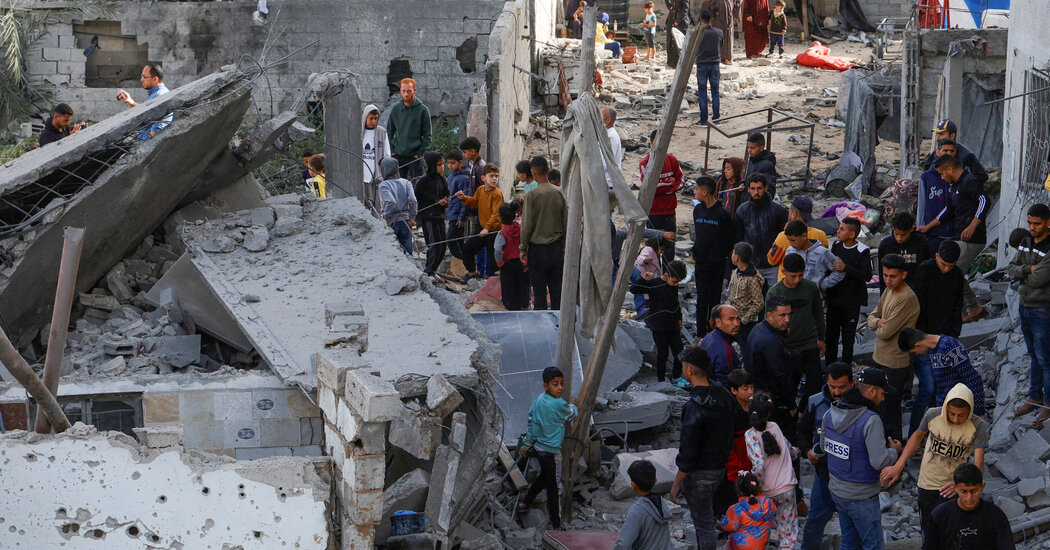Israel’s defense minister announced on Wednesday an expansion of its military offensive in Gaza, including plans to seize “large areas” of the enclave, an apparent attempt to pile more pressure on Hamas as efforts to restore a shattered cease-fire falter.
The remarks, which echoed a similar threat by the minister, Israel Katz, last month, suggest that Israel intends to hold captured territory, at least temporarily, in a shift from earlier tactics. In the 15-month military campaign that preceded the January truce, Israeli forces stormed Gazan cities before withdrawing, leaving behind vast destruction but allowing Palestinian militants to regroup in the rubble.
Mr. Katz said newly captured territory would be “added to the security zones” that the military currently maintains in Gaza, which include a buffer along the enclave’s borders with Egypt and Israel, and much of a key road in the center of the enclave.
He added that the expanding operation involved “wide-scale evacuations of Gaza’s population from combat zones.”
He did not elaborate as to how much territory he hoped to capture or for how long. Since the cease-fire collapsed in late March, Israeli forces have been advancing deeper into the Gaza Strip, including in the southern city of Rafah, though they have not been sweeping through Palestinian cities as they did before the truce. Both sides have been speaking to mediators about a potential deal to restore the truce — so far without success.
It is far from clear whether either side could force the other to accept its terms for an agreement through military means. Hamas is demanding an end to the war and a full Israeli withdrawal in exchange for the release of all hostages.
This week, Prime Minister Benjamin Netanyahu of Israel laid out what appeared to be his demands for postwar Gaza — all of which are likely to be nonstarters for Hamas. They include Hamas’s laying down its arms, comprehensive Israeli security control in Gaza and the implementation of President Trump’s proposal that Gazans leave en masse.
“That’s the plan,” Mr. Netanyahu said in remarks distributed by his office on Sunday. “We aren’t hiding this. We’re ready to talk about it at any time.”
The Israeli military resumed its attacks against Hamas in Gaza on March 18 after Israel and Hamas failed to reach an agreement to extend a cease-fire that started in January. More than 1,000 people in Gaza have been killed since the truce’s collapse, according to the Gaza health ministry, which does not distinguish between civilians and combatants.
Israeli leaders have said that they could not allow the cease-fire to continue as long as Hamas does not release more of the dozens of remaining hostages held in Gaza. Hamas accused Israel of breaking the January truce.
Mediators — including envoys from the Trump administration — have so far failed to broker a new cease-fire. Many Gazans fear the war will continue indefinitely given the entrenched disagreements between Hamas and Israel over the shape of a potential future truce.
The Israeli military has issued sweeping evacuation orders for parts of Gaza. More than 140,000 people in the enclave have been displaced since the cease-fire broke down, according to the United Nations. Many were just beginning to resettle into their old neighborhoods across the Gaza Strip before being forced to flee again.
Gaza health officials say that more than 50,000 people have been killed in the enclave since the war began after the Hamas-led attack on Israel on Oct. 7, 2023. That attack killed 1,200 people and saw 250 taken hostage to Gaza. At least 59 hostages remain in the enclave, although about 35 of those are presumed dead, according to the Israeli government.
Gabby Sobelman contributed reporting from Rehovot, Israel.





